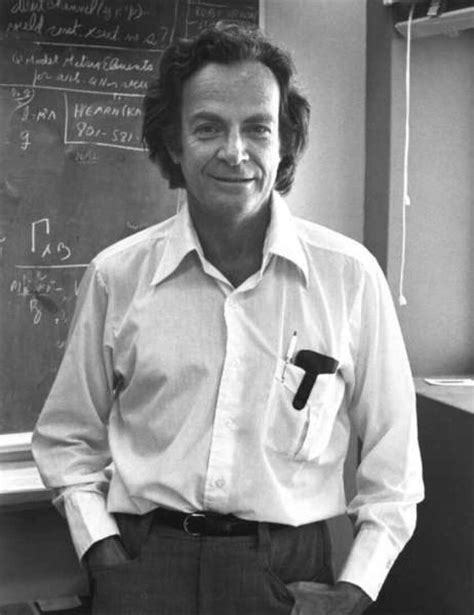“The Problem Is Not People Being Uneducated. The Problem Is That People Are Educated Just Enough To
“The problem is not people being uneducated. The problem is that people are educated just enough to believe what they have been taught, and not educated enough to question anything from what they have been taught.”
—
Richard Feynman

More Posts from Absiesfeed and Others
“You want a tea?
“No, I want romance. I want music. I want love and beauty.
“But not tea, eh? Amazing …”
Check it out

NASA releases the clearest images of Neptune’s rings in over 30 years



🛝 Inner Room 🛝
While most folks were sitting down for supper, NASA tried to move a space mountain.
Beyond sight for backyard stargazers, a spacecraft the size of a vending machine self-destructed by ramming into a harmless asteroid shortly after 7 p.m. ET Monday, September 26th. The high-speed crash was part of the U.S. space agency's Double Asteroid Redirection Test, or DART.
The moment of impact marked the first time in history humans have attempted to alter the path of an asteroid, a flying chunk of rubble left over from the formation of the solar system about 4.6 billion years ago. Most of the time, these ancient rocks pose no danger to Earth, including Dimorphos, the one NASA just used for target practice. But at least three have caused mass extinctions, the most infamous of which wiped out the dinosaurs.
Stegosaurus didn't have NASA.
"We are changing the motion of a natural celestial body in space. Humanity has never done that before," said Tom Statler, program scientist. "This was the substance of fiction books and really corny episodes of Star Trek from when I was a kid, and now it's real."
(continue reading)









955. Adam Caruso & Peter St John /// Studio House /// Highbury, London, UK /// 1993-94
OfHouses presents Houses of the 90′s, part VII: SuperBritish. (Photos: © Hélène Binet. Source: Gennaro Postiglione, ’100: One Hundred Houses for One Hundred European Architects of the Twentieth Century’, Köln: Taschen, 2004.)

Stories of Your Life and Others - Ted Chiang
A book review by Danny Yee
© 2011 https://dannyreviews.com/
The stories in Stories of Your Life and Others tackle big ideas intelligently, in the grand tradition of science fiction. They postulate some fundamental change in how the world works and explore its implications through the experiences or challenges faced by their protagonists.
"Tower of Babylon" is set in a Mesopotamia where there really is a vault of heaven for a tower to reach. In "Understand" an experimental drug makes the protagonist really, really intelligent, capable of understanding not only the world but his own mind. And "Division by Zero" is about a mathematician who discovers that arithmetic is inconsistent.
In "Story of Your Life" a linguist is drafted to help decipher the language of heptapod aliens. Interspersed with the narrative of her linguistic discoveries are vignettes of her lifetime relationship with her daughter. At first these two strands appear to have no connection at all — and their link turns out to be indirect, involving variational approaches to physics and a different kind of consciousness, challenging our notions of memory and free will.
"Seventy-Two Letters" is set in a 19th century England where industrialisation is kabbalah-inspired, with automata (golems) manufactured by applying names to sculptures. And reproduction works in accordance with preformationist theory, with tiny homunculi recursively nested inside sperm. This is mixed up with some politics, involving eugenics and class tensions, and some action. "The Evolution of Human Science", originally published in Nature, is less a story than an abstract speculation about how human science might react to a "metahuman" population with a superior but incommunicable knowledge system.
In "Hell is the Absence of God" angels regularly visit the earth, dealing out miracles (and incidental damage); statistics are kept on the results, and on the fraction of people who are taken to Heaven or condemned to life in Hell, without God. The lead character is desperate to learn how to love God so he can rejoin his dead wife in Heaven; two other characters face rather different challenges.
Presented in a documentary format, with short perspectives from different people, "Liking What You See" is set in a near future where it's possible to reversibly modify people's brains so that they don't perceive beauty or ugliness in faces. A progressive university is debating whether this, known as calliagnosia, should be a requirement for students.The significant novelties involved in Chiang's stories require some serious suspension of disbelief, but he manages this well. He doesn't dwell on the presuppositions or back-story, attempting to justify the impossible, but rapidly introduces the setting and elaborates on it only as much as is necessary for the plot and the exploration of ideas. (The occasional exceptions are jarring, for example in "Story of Your Life" when some nonsensical argument is presented to explain why the aliens haven't learned anything from human television broadcasts.)
None of the characters have much depth. They are driven by intellect rather than emotion and their personalities presented from the outside, fairly clinically. A focus on their understanding of the world is arguably necessary for the elaboration of the story ideas, however, and there's only so much that can be fitted into a short story. (I am not convinced that Chiang could produce a decent novel using the same approach.)The plots work effectively, both in unfolding the implications of the central ideas and in holding the reader's attention. This is true both in the stories with straightforward chronological narratives and in the more unusually structured ones, with resolutions provided by a mix of goal seeking, problem solution, and structural cadence.Stories of Your Life and Others is the most entertaining and thought-provoking collection of science fiction stories I've read for a long time.
NASA's Planetary Defense Coordination Office (PDCO) successfully carried out its Double Asteroid Redirection Test (DART) to impact with the asteroid Dimorphos, satellite of Didymos

DART on-board camera

observed by Asteroid Terrestrial-impact Last Alert System (ATLAS)

observed by Light Italian Cubesat for Imaging of Asteroids (LICIA)

-
 whispersinthecosmos liked this · 6 months ago
whispersinthecosmos liked this · 6 months ago -
 rackets-and-fuel-main liked this · 8 months ago
rackets-and-fuel-main liked this · 8 months ago -
 oracleofghats liked this · 8 months ago
oracleofghats liked this · 8 months ago -
 echoes-of-isolation liked this · 9 months ago
echoes-of-isolation liked this · 9 months ago -
 aulolita reblogged this · 9 months ago
aulolita reblogged this · 9 months ago -
 veronicamaximova liked this · 10 months ago
veronicamaximova liked this · 10 months ago -
 scientific-dog liked this · 11 months ago
scientific-dog liked this · 11 months ago -
 katyaranada liked this · 11 months ago
katyaranada liked this · 11 months ago -
 amor-a-primera-vista-perras liked this · 11 months ago
amor-a-primera-vista-perras liked this · 11 months ago -
 bloodytimelady liked this · 11 months ago
bloodytimelady liked this · 11 months ago -
 sakuraswordly reblogged this · 11 months ago
sakuraswordly reblogged this · 11 months ago -
 randomizedvar liked this · 1 year ago
randomizedvar liked this · 1 year ago -
 wednesdaysmind reblogged this · 1 year ago
wednesdaysmind reblogged this · 1 year ago -
 moonofburgundy liked this · 1 year ago
moonofburgundy liked this · 1 year ago -
 yeahimsickyouknewit liked this · 1 year ago
yeahimsickyouknewit liked this · 1 year ago -
 somethingincommunicable liked this · 1 year ago
somethingincommunicable liked this · 1 year ago -
 notaboyscout65 liked this · 1 year ago
notaboyscout65 liked this · 1 year ago -
 lilnasxvevo liked this · 1 year ago
lilnasxvevo liked this · 1 year ago -
 adreamthatsworthkeeping reblogged this · 1 year ago
adreamthatsworthkeeping reblogged this · 1 year ago -
 sparklyangeltheorist liked this · 1 year ago
sparklyangeltheorist liked this · 1 year ago -
 pointyish liked this · 1 year ago
pointyish liked this · 1 year ago -
 lurker-at-thresholds liked this · 1 year ago
lurker-at-thresholds liked this · 1 year ago -
 spacegirlinrealtime liked this · 1 year ago
spacegirlinrealtime liked this · 1 year ago -
 artinwood54 liked this · 1 year ago
artinwood54 liked this · 1 year ago -
 mustafamauyad95 liked this · 1 year ago
mustafamauyad95 liked this · 1 year ago -
 lessthanwilliam liked this · 1 year ago
lessthanwilliam liked this · 1 year ago -
 xrichforever liked this · 1 year ago
xrichforever liked this · 1 year ago -
 ialexdxd liked this · 1 year ago
ialexdxd liked this · 1 year ago -
 whenimgod liked this · 1 year ago
whenimgod liked this · 1 year ago -
 vexatiousbby liked this · 1 year ago
vexatiousbby liked this · 1 year ago -
 msksksksksks liked this · 1 year ago
msksksksksks liked this · 1 year ago -
 manaalsstuff liked this · 1 year ago
manaalsstuff liked this · 1 year ago -
 sh-tposter2021 liked this · 1 year ago
sh-tposter2021 liked this · 1 year ago -
 point-of-void reblogged this · 1 year ago
point-of-void reblogged this · 1 year ago -
 chamberofodairs reblogged this · 1 year ago
chamberofodairs reblogged this · 1 year ago -
 diemdenee liked this · 1 year ago
diemdenee liked this · 1 year ago -
 afierysadnesscalleddesire liked this · 1 year ago
afierysadnesscalleddesire liked this · 1 year ago -
 razzel-my-dazzel22 liked this · 1 year ago
razzel-my-dazzel22 liked this · 1 year ago -
 bumblebeesbestknees liked this · 1 year ago
bumblebeesbestknees liked this · 1 year ago -
 absiesfeed reblogged this · 1 year ago
absiesfeed reblogged this · 1 year ago -
 absiesfeed liked this · 1 year ago
absiesfeed liked this · 1 year ago -
 heyhbranda reblogged this · 1 year ago
heyhbranda reblogged this · 1 year ago -
 heyhbranda liked this · 1 year ago
heyhbranda liked this · 1 year ago

